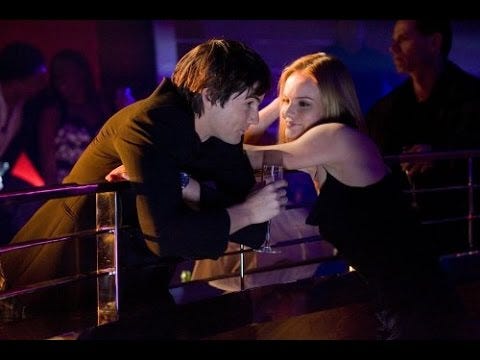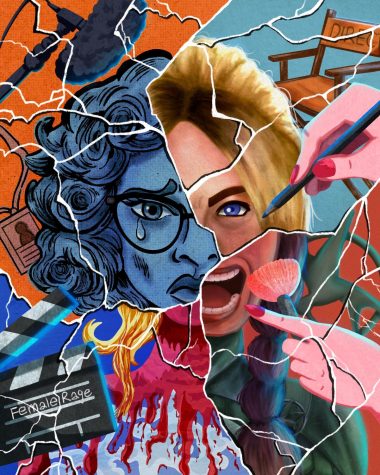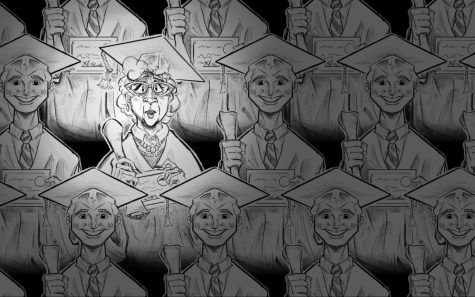The Only Shade for a Hero is White
A look at white washing and race-bending in Hollywood
Cinema adaptions of our favorite properties are what’s hot in Hollywood. While some argue that the characters from the original source material — like the books or the comics — are better, movies are the ones that reach the widest audience. Which is why so many best sellers are adapted into movies and why comic books are being mined for new films and TV shows.
However, there is a startling issue that occurs when our favorite characters are adapted for the big screen, and fans are starting to take notice.
As fans, we pay a lot of attention to these characters. So it’s only natural that we get a bit protective about them when they aren’t being handled properly. If something looks out of place, no matter how small, fans can spot it in an instant.
Show Batman on screen with Bat-Nipples, and we’ll see it. Have Bella say something to Edward out of character, and we’ll hear it. Make Spider-Man an emo disco boy with an equally ridiculous Venom portrayal (damn you, Raimi) and we riot.
There is one defect, however, which happens with a horrendous consistency: During the transition from comics, books, or manga to the silver screen many of the characters’ skin colors change from “what was written” to “what is white.’
In recent years, there has been no shortage of controversy in regards to the race-bending and white washing of our favorite heroes.
According to the authors of Racebending.com, “ the term ‘race-bending’ refers to situations where a media content creator — movie studio, publisher, etc — has changed the race or ethnicity of a character.”
The most recent example of this problem is the casting of Scarlett Johansson as Major Motoko Kusanagi for the adaption of the popular manga, “Ghost in the Shell.” In the manga, Major Motoko Kusanagi is a Japanese counter-terrorism operator who heads a fictional organization known as Public Security Section 9.
When the casting was announced, many fans took to Twitter to share their displeasure about having one of their favorite characters white washed.
FINE, white Hollywood, you can have Ghost in the Shell #whitewashedOUT https://t.co/ndH6EkJ1Aw pic.twitter.com/gpMAwXWO6A
— GQ Magazine (@GQMagazine) May 3, 2016
Then there are original screenplays that adapt real stories that happened to real people, whose skin color is falsely portrayed, or just changed completely to white.
The movie adaption of Mariane Pearl, the wife of slain journalist Daniel Pearl, cast Angelina Jolie as Mariane Pearl and layered her with heavy skin makeup to darken her appearance.
The movie “21,” which is about a handful of MIT students who took Vegas for millions by applying their mathematical skills to gambling, featured a predominantly white cast despite the actual group involved in these events being predominantly Asian.

While race-bending is nothing new in Hollywood, social media and the internet have allowed fans a platform to voice their displeasure over casting they don’t see fit. As of this writing, Twitter users have taken it upon themselves to spread awareness with hashtags like #whitewashedout.
Celebrities such as Constance Wu and Kerry Washington have also joined the fight and consistently help spread awareness for this movement.
Twitter users are using the tags #StarringJohnCho and #StarringConstanceWu to re-imagine movie posters with actors John Cho and Constance Wu as the leads in Hollywood Blockbusters instead of the standard white fare.
My contributions to #StarringConstanceWu.
Thx #StarringJohnCho & @lcshorten for the encouragement #whitewashedOUT pic.twitter.com/Xe04Tog2YR— Jigme (@JigmeUgen) May 13, 2016
I guess you play big or you don't play at all. Right?
21 #StarringJohnCho pic.twitter.com/Ss9JEy0lnA
— William Yu 유규호 (@its_willyu) May 11, 2016
It’s bad enough that there is such a huge lack of diversity in Hollywood; to change a minority character from the source material to a white character for the silver screen is just a travesty.
While white washing is something that has only recently started coming to the forefront of society’s collective discussion, it is by no means a new phenomenon. This is actually a practice that began hundreds of years ago. It is important to remember one of the first victims of history’s relentless white paintbrush. Ladies and gentlemen, I present to you history’s first racially bent hero, Jesus Christ.
As is detailed in this excellent episode of MTV’s Decoded with Franchesca Ramsey, Jesus was originally a dark skinned man from Nazareth. His image, however, was changed during the Renaissance, when artists began depicting him as something similar to a beach bum from the shores of Orange County.
What is most fascinating is the reason why his race was changed as time went on.
“Medieval Christians didn’t like the idea of Jesus being dark-skinned and dark haired because that meant he looked Jewish. Spoiler alert: He was Jewish,” said Ramsey.
After this re imaging of Jesus, “beach bum Jesus” became the de facto appearance for Christians all across the world.

As Ramsey explains in the video, theologians believe that Jesus’s skin change came about from Bible passages that liken the light to represent good, and darkness to represent evil.
During the spread of Christianity into the new world, Jesus was used as the figurehead of a religion that was used to erase the indigenous religions and beliefs, while enslaving and oppressing them. They were shown a symbol that represented the superiority of light skin. This colonialist practice happened all over the Americas, including the United States.
Jesus is an important figure in history and has a huge following all over the globe. He is the icon and hero for one of the world’s most popular religions. And his image is that of a man whose skin would have burned in the ancient Israeli sun.
The people in control of disseminating the story of Jesus changed his skin color because they could not righteously discriminate against people of color if their own savior was a person of color.

Much like how those in charge of Jesus image rationalized changing his ethnicity for the purpose of racism and hypocrisy, major Hollywood Studio execs rationalize the of casting predominately white actors for lead roles by stating that audiences won’t watch a movie with a minority lead, even though the already popular source material stars a person of color.
Their excuse is as false as Jesus’s skin color.
As is stated in an article by Racebending.com, “Year after year, the Motion Picture Association of America has released statistics showing that the majority of movie goers are not white men. Women have comprised a larger share of moviegoers than men since 2009. In 2013, ‘Hispanic’, ‘African American’, and ‘Other’ (including Asian American) moviegoers all had higher annual per-capita movie attendance than white moviegoers. The average ‘Hispanic’ moviegoer went to the movies six times and the average African American and Other moviegoers went four times, versus ‘Caucasian’ viewers who only went to the movies three times.”
Much in the same way Jesus’s historical casting for the global stage was made by the people in control of his image, Hollywood studio executives are the ones making all of our modern day heroes White Jesuses.
They are the ones who hold the purse strings, and decide at the end of the day who stars in their multi-million dollar films.
With the continued practice of casting almost exclusively white actors as leads and race-bending for others, one has to ask, “Is there really a place for these practices?”
Race-bending, while currently being misused, can actually be used to give more opportunities to actors of color in roles whose stories don’t explicitly call for a white actor. What if we took the horrendous practice of race-bending and used it to even out the colors of Hollywood’s rainbow, or lack thereof?
For example, Hollywood has on occasion used race-bending to the benefit of a particular role. Marvel Studios cast the role for the director of S.H.I.E.L.D. Nick Fury, a white Vietnam vet in the comics, as a black man.
In the comics, Nick Fury was sort of a flat character that didn’t really stand out, but Samuel L. Jackson brought a nuance to the character that really allowed him to stand out among the vivid superheroes in “The Avengers” and its subsequent films.
Another great example of race-bending used to feature an actor of color was the casting of Morgan Freeman in The Shawshank Redemption. An adaption of a Steven King story, his character Ellis Boyd “Red” Redding was actually an Irish man. This was Morgan Freeman’s first breakout role for and garnered him an Oscar nomination while solidifying him as one of the best actors in Hollywood. His casting in this role has become so iconic, observing it now, it would be hard to picture any other actor playing it.
And that is kind of the point.
When Hollywood casts predominantly white actors, we rarely, if ever, get a chance to see actors who could potentially bring something different and interesting to a role, all because of the color of their skin. This is extremely discouraging for minorities, as we feel a disconnect, and have trouble identifying with the people we see on the big screen.
It sends minorities like myself a message: Only white men and women can save the day. Minorities like yourself can help as a sidekick with a ridiculous accent or not at all.
I can’t tell you how many people secretly wished they were white growing up so they could look like their favorite hero. All the kids who wanted to play Batman in their school yard, only to have their white friends tell them, “Batman isn’t Mexican.” Or for those who couldn’t identify with any heroes growing up because none of them looked like her.
Its hard to explain this problem to people who don’t see white washing, because usually they are not the ones affected. It would be like trying to explain the colors of a rainbow to someone who is completely colorblind; all they see is what they’ve always seen. It’s all they have ever known.
Are there some roles that shouldn’t be race-bent? Of course. I think it would be completely tone deaf to feature minorities in the lead cast of a film like “American History X,” or to have the members of NWA in “Straight out of Compton” to be portrayed as anything other than African American.
But for films where a characters race isn’t explicit or important to the narrative of the story, the color of an actor’s skin should not disqualify him or her on the false premise that audiences aren’t ready for it. I think we have proven that we are ready for diversity with our voices, and more importantly, our wallets.
As for white washing, however, the answer is no!
No, there is not a place in our society for white washing.

Oh, and to the cockamamie contingency of bigots on the internet who believe minorities are race-bending too many “white roles,” take a look at the data and remember, you did it first. Right, Jesus?
Right.
Photo Graphics by Angelica Cruz














